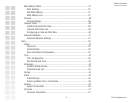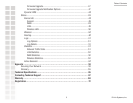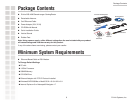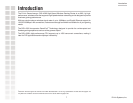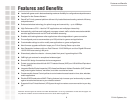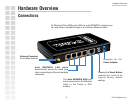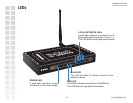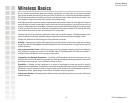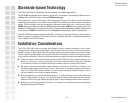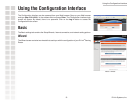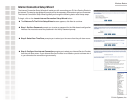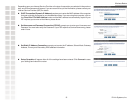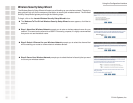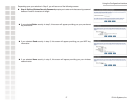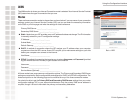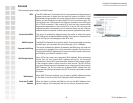
Wireless Basics
12 D-Link Systems, Inc.
Standards-based Technology
The DGL-4300 Wireless Broadband Router utilizes the new 802.11g standard.
The IEEE 802.11g standard is an extension of the 802.11b standard. It increases the data rate up to
54Mbps within the 2.4GHz band, utilizing OFDM technology.
This means that in most environments, within the specified range of this device, you will be able to
transfer large files quickly or even watch a movie in MPEG format over your network without noticeable
delays. This technology works by transmitting high-speed digital data over a radio wave utilizing
OFDM (Orthogonal Frequency Division Multiplexing) technology. OFDM works by splitting the radio
signal into multiple smaller sub-signals that are then transmitted simultaneously at different frequencies
to the receiver. OFDM reduces the amount of crosstalk (interference) in signal transmissions.
The DGL-4300 is backwards compatible with 802.11b devices. This means that if you have an existing
802.11b network, the devices in that network will be compatible with 802.11g devices at speeds of
up to 11Mbps in the 2.4GHz range.
Installation Considerations
The D-Link DGL-4300 lets you access your network, using a wireless connection, from virtually
anywhere within its operating range. Keep in mind, however, that the number, thickness and location
of walls, ceilings, or other objects that the wireless signals must pass through, may limit the range.
Typical ranges vary depending on the types of materials and background RF (radio frequency) noise
in your home or business. The key to maximizing wireless range is to follow these basic guidelines:
Keep the number of walls and ceilings between the DGL-4300 and other network devices to a
minimum - each wall or ceiling can reduce your D-Link wireless product’s range from 3-90 feet
(1-30 meters). Position your devices so that the number of walls or ceilings is minimized.
Be aware of the direct line between network devices. A wall that is 1.5 feet thick (.5 meters), at a
45-degree angle appears to be almost 3 feet (1 meter) thick. At a 2-degree angle it looks over 42
feet (14 meters) thick! Position devices so that the signal will travel straight through a wall or
ceiling (instead of at an angle) for better reception.
Building Materials can impede the wireless signal - a solid metal door or aluminum studs may
have a negative effect on range. Try to position wireless devices and computers with wireless
adapters so that the signal passes through drywall or open doorways and not other materials.
Keep your product away (at least 3-6 feet or 1-2 meters) from electrical devices or appliances
that generate extreme RF noise.



